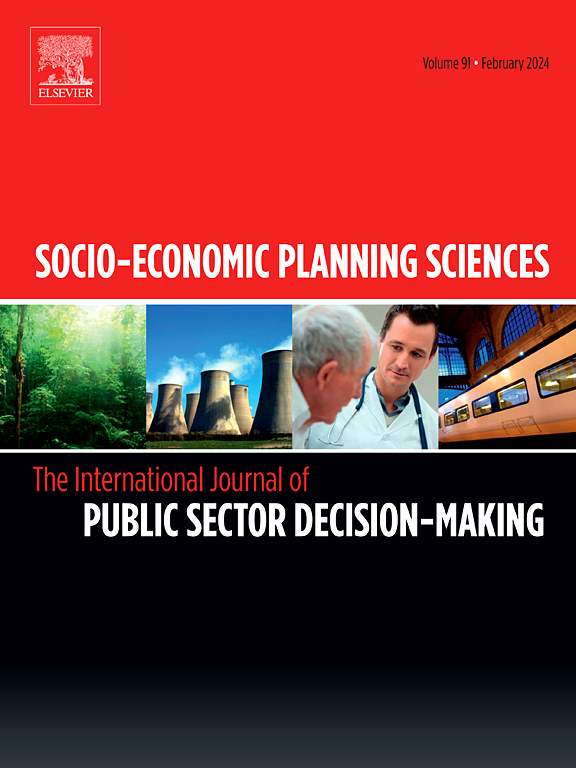Integrating logistics planning and population sampling decisions for humanitarian needs assessment
IF 6.2
2区 经济学
Q1 ECONOMICS
引用次数: 0
Abstract
After a disaster, humanitarian organizations must quickly assess the needs of affected populations spread across a large area to inform effective relief distribution. This process involves site visits and collecting information through interviews, where balancing travel time and assessment accuracy is critical. This paper introduces the Assessment Routing Problem with Coverage and Accuracy, which addresses the logistical planning and sampling decisions of a post-disaster needs assessment team. The problem involves determining which sites to visit, in what sequence, and how much time to spend at each site to collect information within a total assessment time limit. We present a mathematical model that balances site coverage and sampling accuracy, and propose a constructive heuristic and a tabu search algorithm to efficiently solve large-scale instances. Computational experiments demonstrate that the tabu search algorithm can quickly obtain optimal or near-optimal solutions for large instances, while the performance of the heuristic is influenced by network topology. We illustrate the effectiveness of our approach through a case study based on the 2011 Van Earthquake in Turkey. Our findings emphasize the trade-offs involved in prioritizing certain areas and the advantages of leveraging reliable prior information in the assessment process to achieve better site coverage and sampling accuracy.
求助全文
约1分钟内获得全文
求助全文
来源期刊

Socio-economic Planning Sciences
OPERATIONS RESEARCH & MANAGEMENT SCIENCE-
CiteScore
9.40
自引率
13.10%
发文量
294
审稿时长
58 days
期刊介绍:
Studies directed toward the more effective utilization of existing resources, e.g. mathematical programming models of health care delivery systems with relevance to more effective program design; systems analysis of fire outbreaks and its relevance to the location of fire stations; statistical analysis of the efficiency of a developing country economy or industry.
Studies relating to the interaction of various segments of society and technology, e.g. the effects of government health policies on the utilization and design of hospital facilities; the relationship between housing density and the demands on public transportation or other service facilities: patterns and implications of urban development and air or water pollution.
Studies devoted to the anticipations of and response to future needs for social, health and other human services, e.g. the relationship between industrial growth and the development of educational resources in affected areas; investigation of future demands for material and child health resources in a developing country; design of effective recycling in an urban setting.
 求助内容:
求助内容: 应助结果提醒方式:
应助结果提醒方式:


